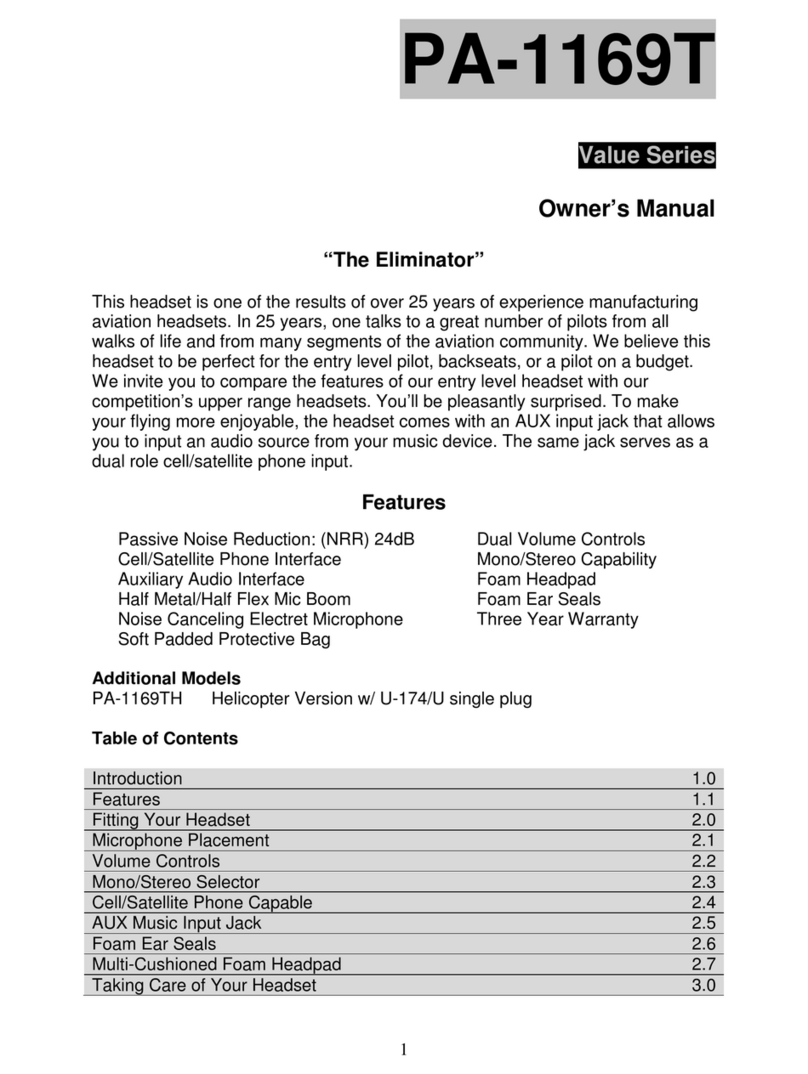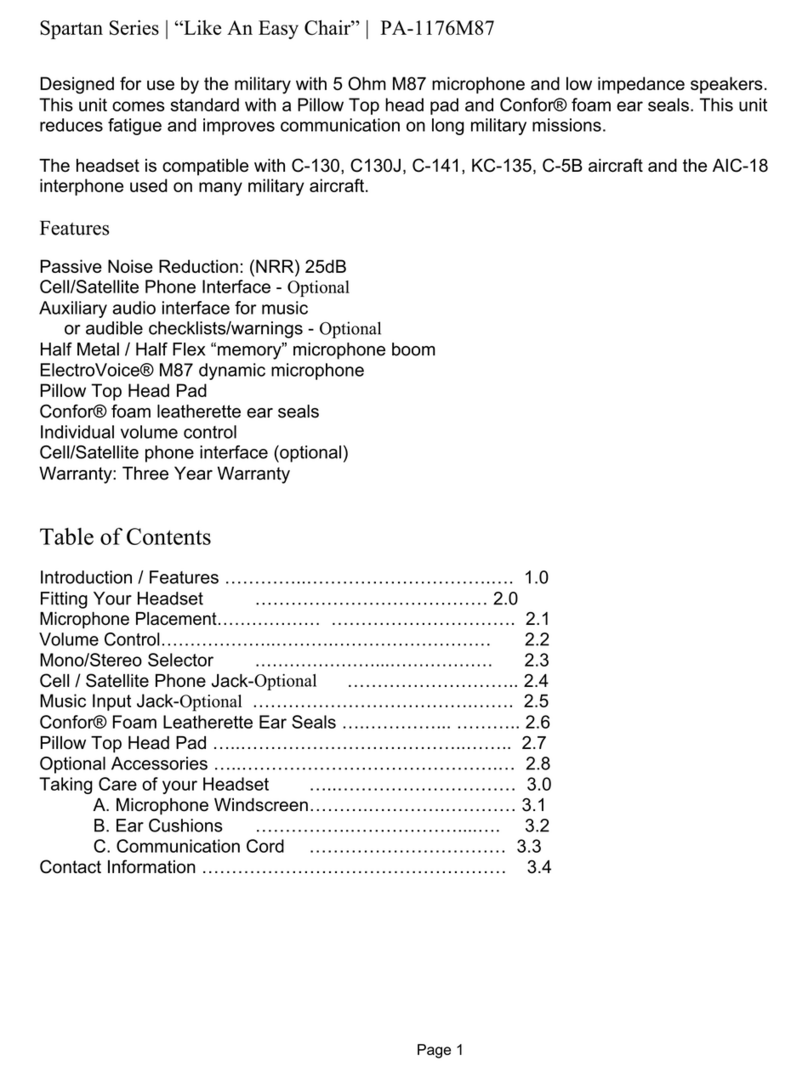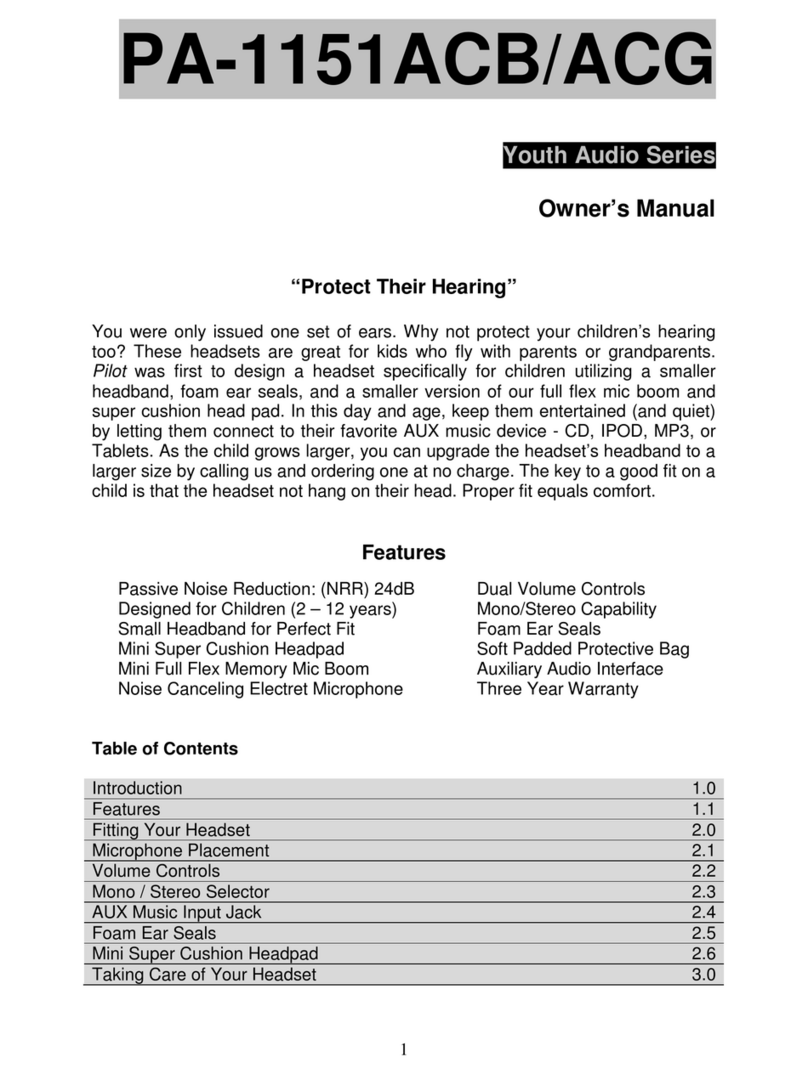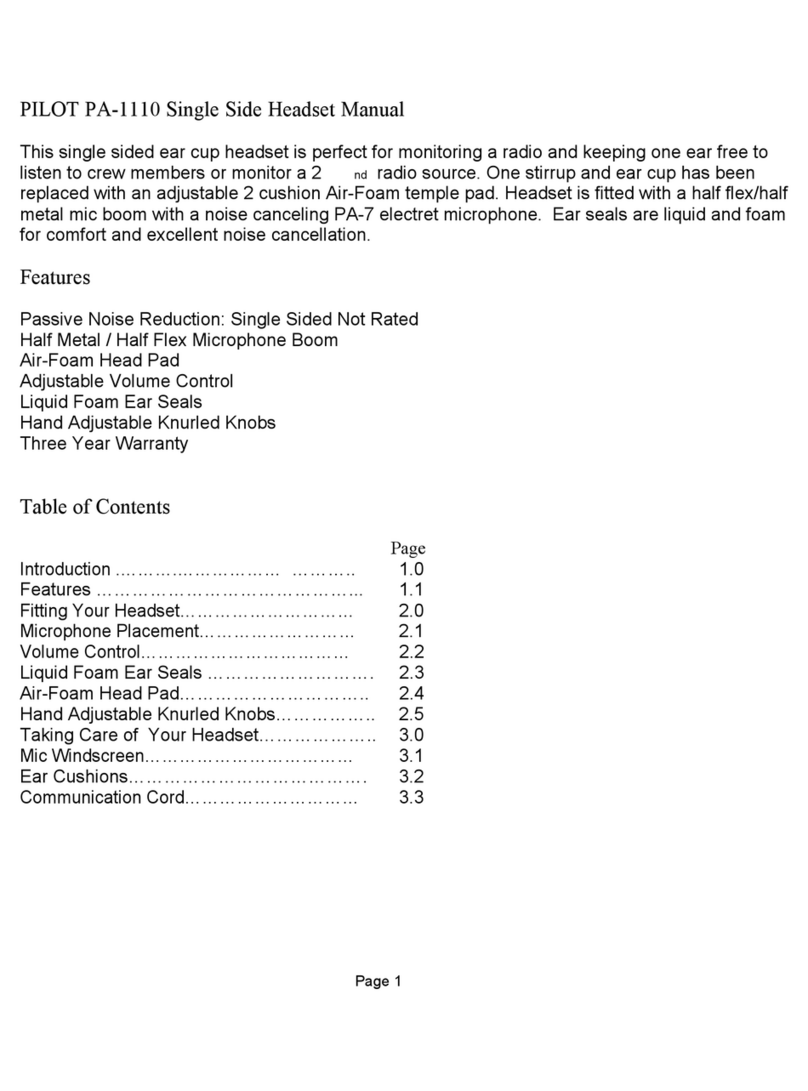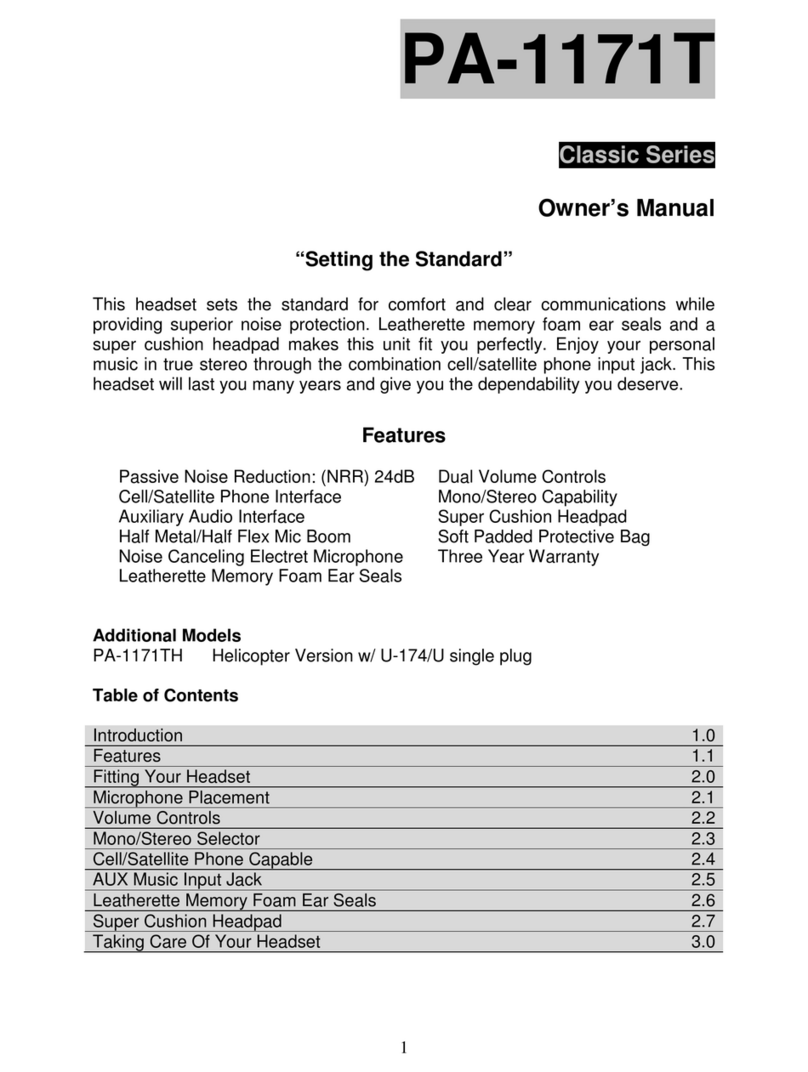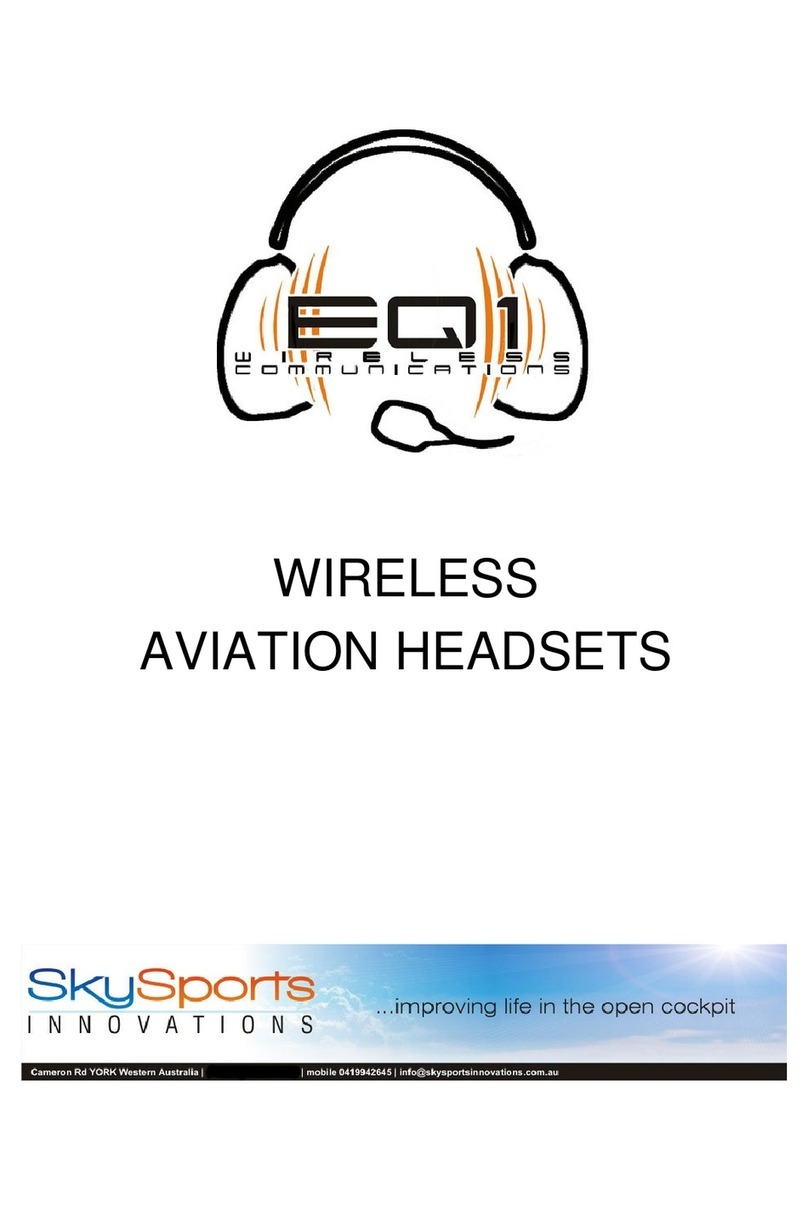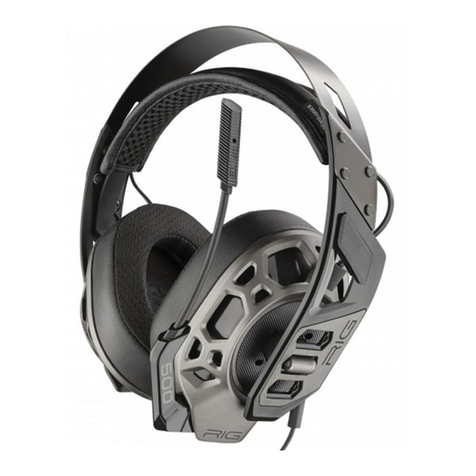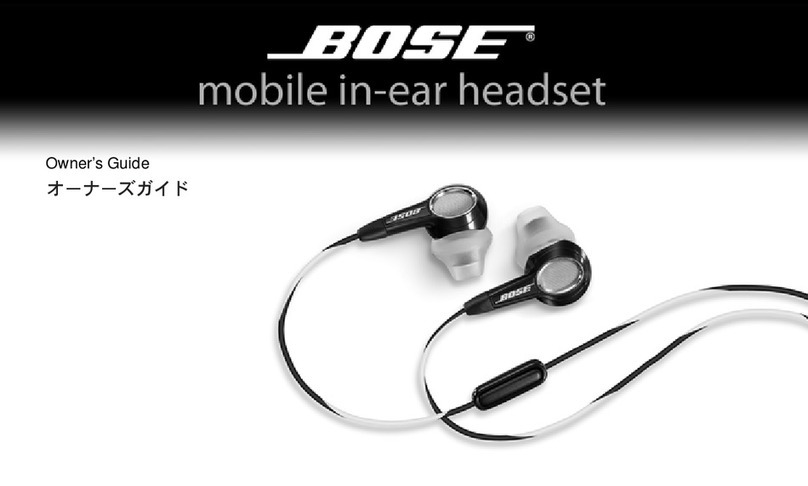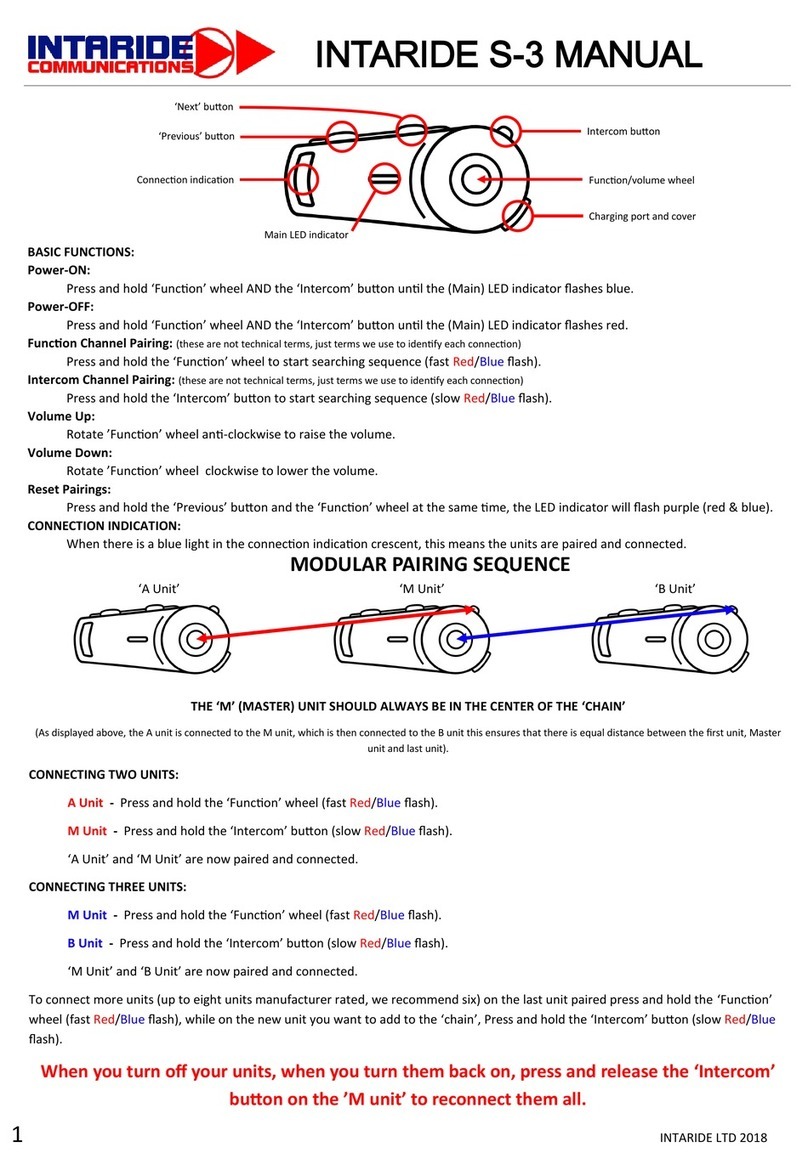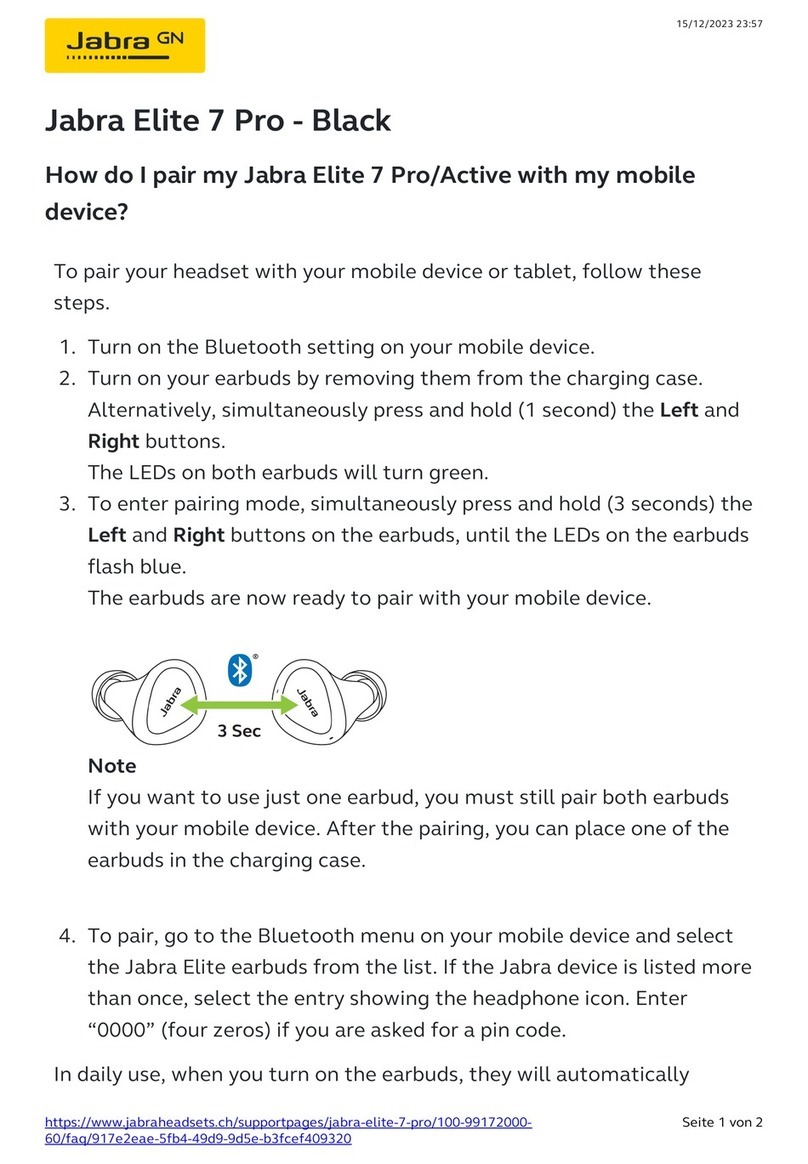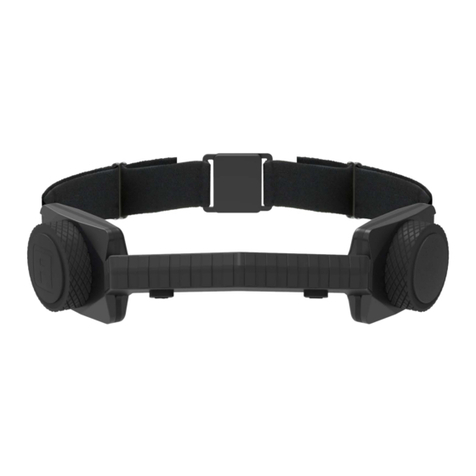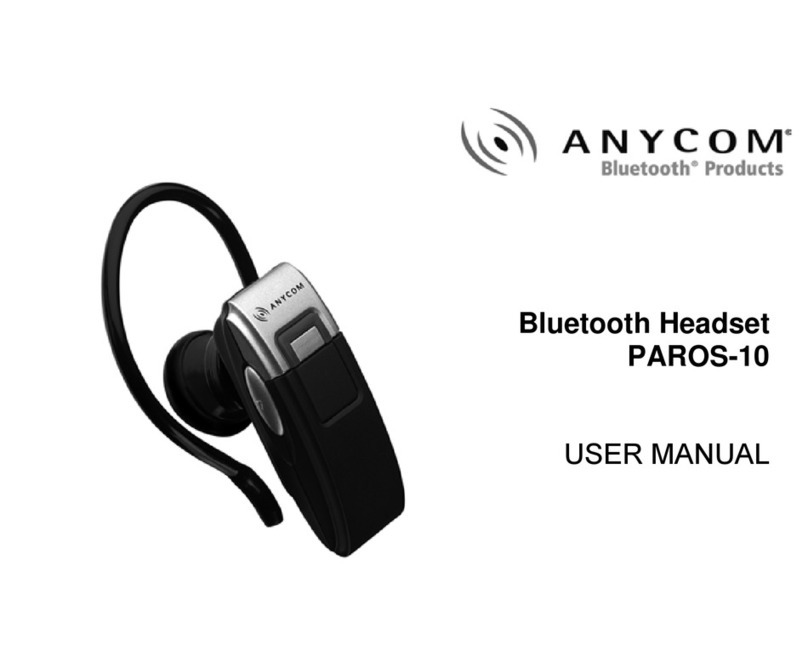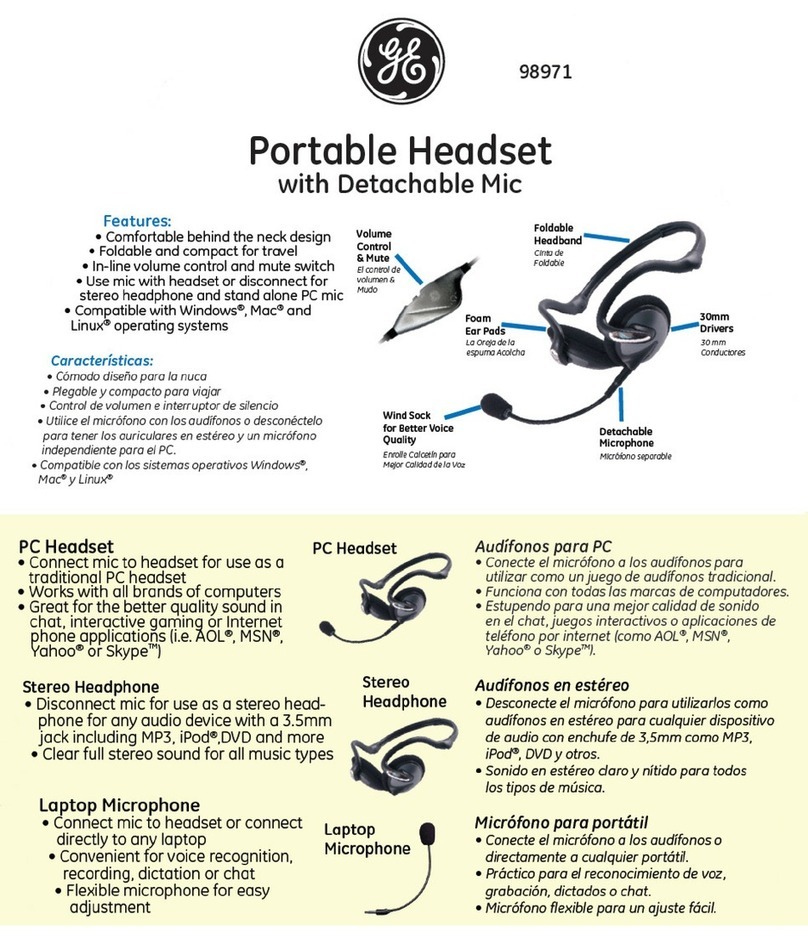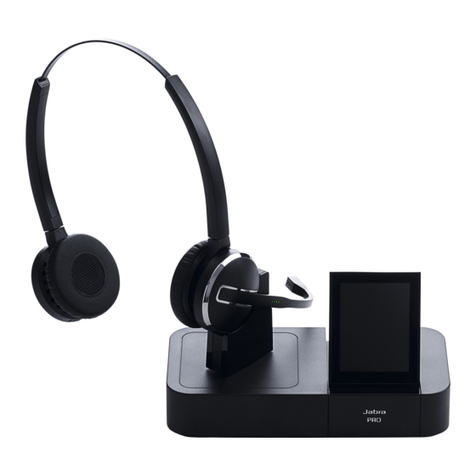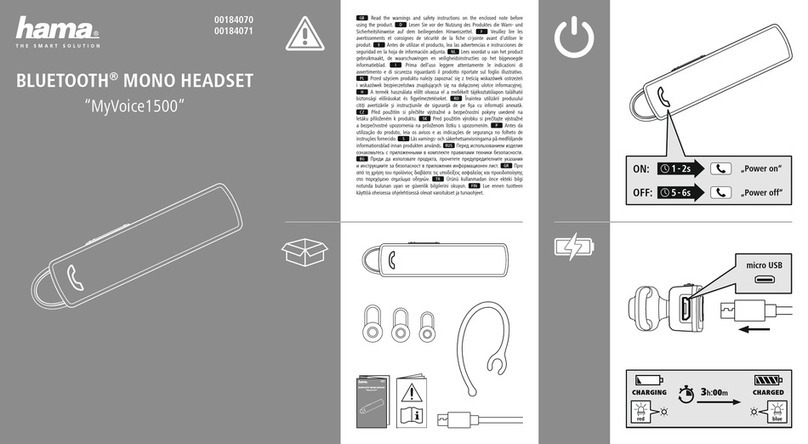
Liberty Series | “Biggest Bank For The Buck” PA-1771T Page 2
Fitting Your Headset
Wearing your headset properly is paramount to achieving both comfort and the best performance from your new ANR
headset. The headset should be placed on your head and slowly pulled down so that each ear cup is properly positioned over
each ear for maximum noise attenuation.
The headband can be tightened or loosened by using the hand adjustable knurled knobs on the slides of the headband so that
it fits your head properly. It should apply slight pressure on your head without being snug. You may need to make your final
adjustments in a high noise environment and with the ANR electronics turned on.
Microphone Placement
Your headset comes with a fully flexible microphone boom and a noise canceling electret microphone. The boom can be
rotated 360 degrees for left or right side use. Proper placement of the microphone is critical in order to achieve clear
communications. The microphone should be placed at the corner of your mouth approximately 1/4” away from the lips.
Volume Control (On Comm-cord splitter)
The PA-1771T is fitted with 2 individual volume controls, one each for right and left side of the headsets. The volume
control is located on one side of the triangular splitter on the comm-cord. The other side contains the mono/stereo selector.
When adjusting the volume control the pilot-in-command should adjust their volume control first with the audio system
turned on and the ANR system turned off. Then turn the ANR back on and adjust the individual sides of the headset.
Mono/Stereo Selector (On Comm-cord splitter)
Your headset comes standard with a Mono/Stereo selector switch which is located on one side of the triangular comm-cord
splitter. “M” indicates the mono position while “S” indicates the stereo position. The volume control is on the reverse side.
It should be noted that if you are using a monaural intercom and your headset is set in the stereo position, you will only hear
through one speaker on your headset. With a stereo intercom, you will hear true stereo in if the selector switch is set to the
stereo mode position.
Power Button (On Battery Box)
The push button on the battery box is the On/Off switch for your ANR headset. To turn power on, press the button down,
re-engaging the button will turn the power off. When the ANR system is turned on the green LED light on the faceplate of
the battery box will illuminate.
LED Light (On Battery Box)
The LED light indicates the power status of your ANR system. When the light is illuminated, the ANR system is turned on.
Power Jack (On Battery Box)
The power cord from the headset plugs into the power jack on the face plate of the battery box.
Battery Compartment (On Battery Box)
The ANR System is powered by one 9V alkaline battery. Battery life is estimated to be 25-35 hours depending on level of
noise in the environment. Battery life is also affected by age, and extreme temperatures (hot or cold). To change the battery,
simply slide the battery plate off of the battery box and insert the new battery. Reinstall the battery plate and you’re ready to
go.
Cell/Satellite Phone Capable
In an emergency, having the capability of being able to place a cell phone call from your aircraft is one of the reasons
PILOT has installed a Cell/Satellite jack on the headset. Located on the boom side ear cup, a 3.5mm jack has been installed.
It will work with 90% of cell phones in the marketplace. An adapter may need to be purchased from us in order to utilize
this feature. The jack can also be used to plug in your music input source.
